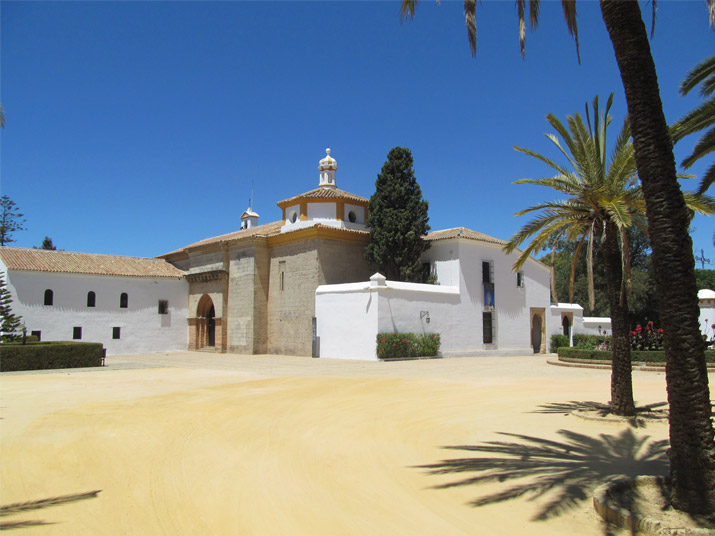Columbus’s Journal provides a European historical record of daily events over a seven-month period (August 3, 1492 through March 15, 1493) which is unusual for the 15th century and far exceeds in detail and specificity the related historical record preceding or following. With the Journal’s conclusion, necessarily this Chronology now often will refer to approximate dates or ranges of dates and the occurrence of events over weeks.
Columbus and the ten Taínos spent the latter half of March 1493 in or near Palos, Spain. Columbus lodged in the Monastery of Santa María de la Rábida (shown below), which had supported his seven-year effort to secure Queen Isabella and King Ferdinand’s support, and the Taínos stayed with Columbus or close by. Encounters Unforeseen dramatizes the Taínos’ experiences in, and reactions to, their stay in Palos, which then likely was a larger village than found on Guanahaní but smaller than Guacanagarí’s village in Haiti.

Isabella and Ferdinand received Columbus’s letters describing the lands and peoples encountered (see February 10) and were astonished and excited to commence possession and subjugation of them. They feared Portugal’s King John II would send a fleet to claim them for his own. They decided—on the basis of Columbus’s letters alone—that a large fleet should be assembled promptly to transport a considerable number of colonists to commence subjugation of the Taíno homeland and thwart John.
By March 29, Columbus departed by mule for Seville to await Isabella and Ferdinand’s approval for an audience in Barcelona. He would take the ten Taínos everywhere he went in Spain, referring to them as “Indians” and asserting that their olive-skin color was proof of attaining the Indies. He also would have them heavily adorned with Taíno gold jewelry to prove that the lands found abounded with gold. Encounters Unforeseen depicts what the Taínos would have discovered on the journey.
